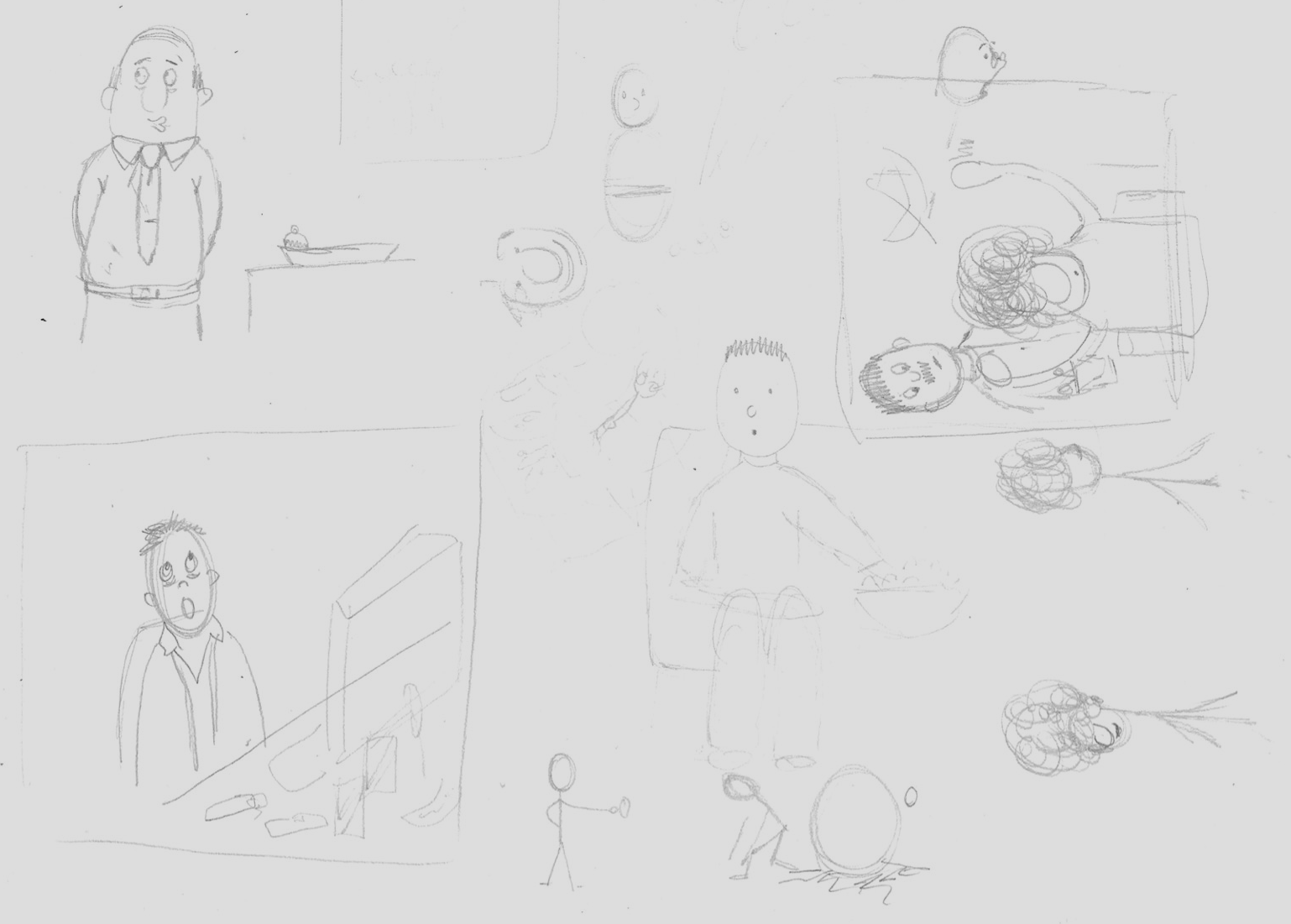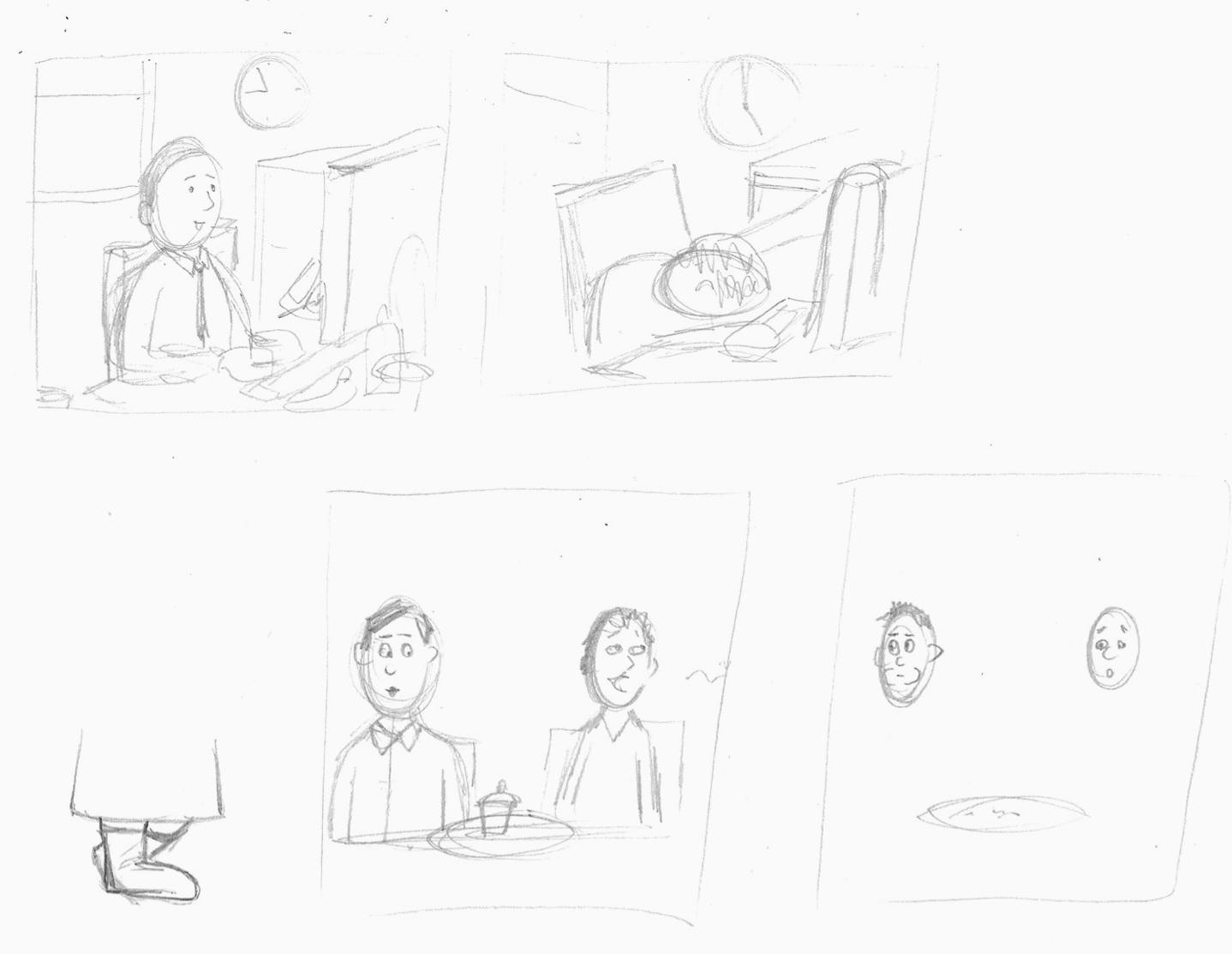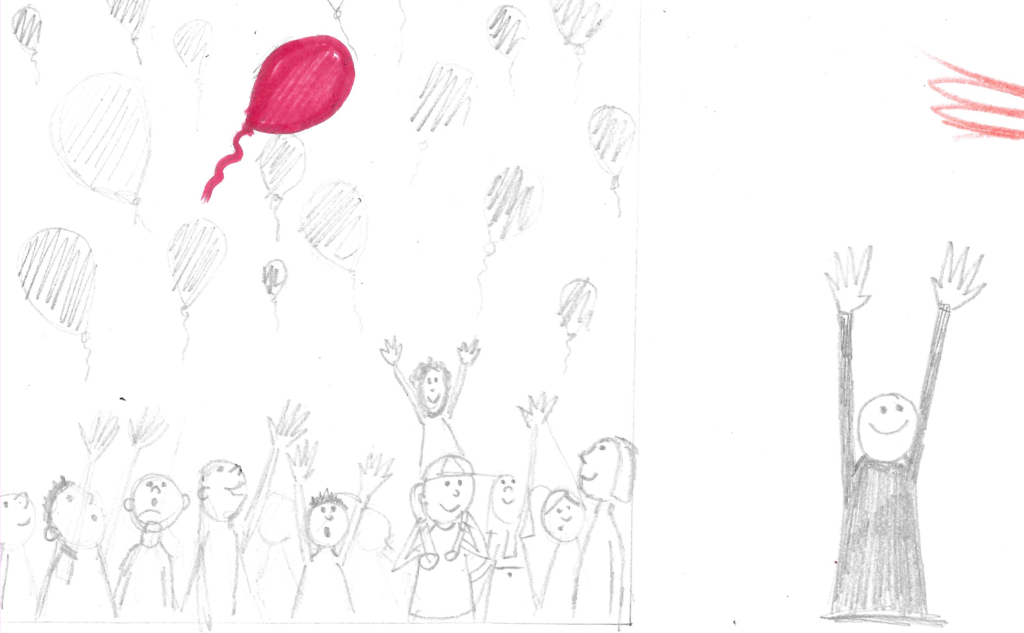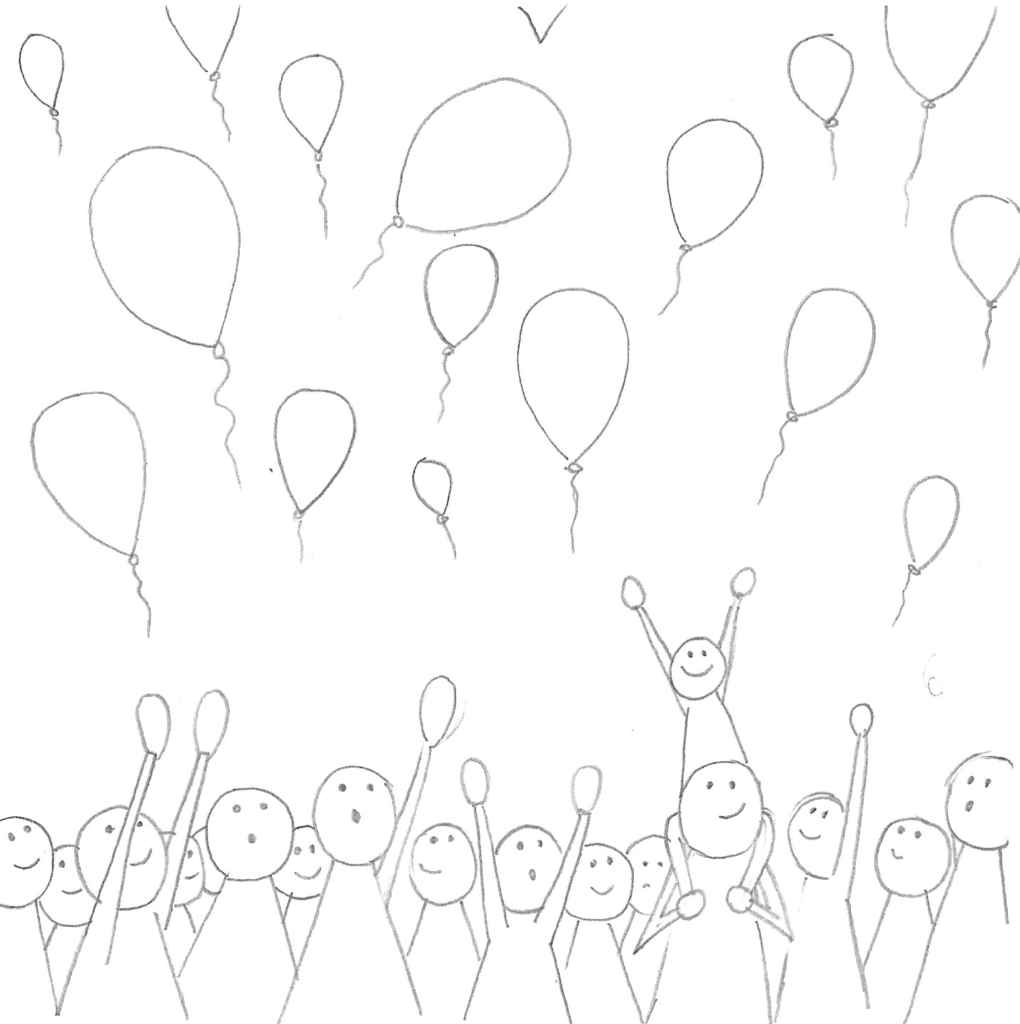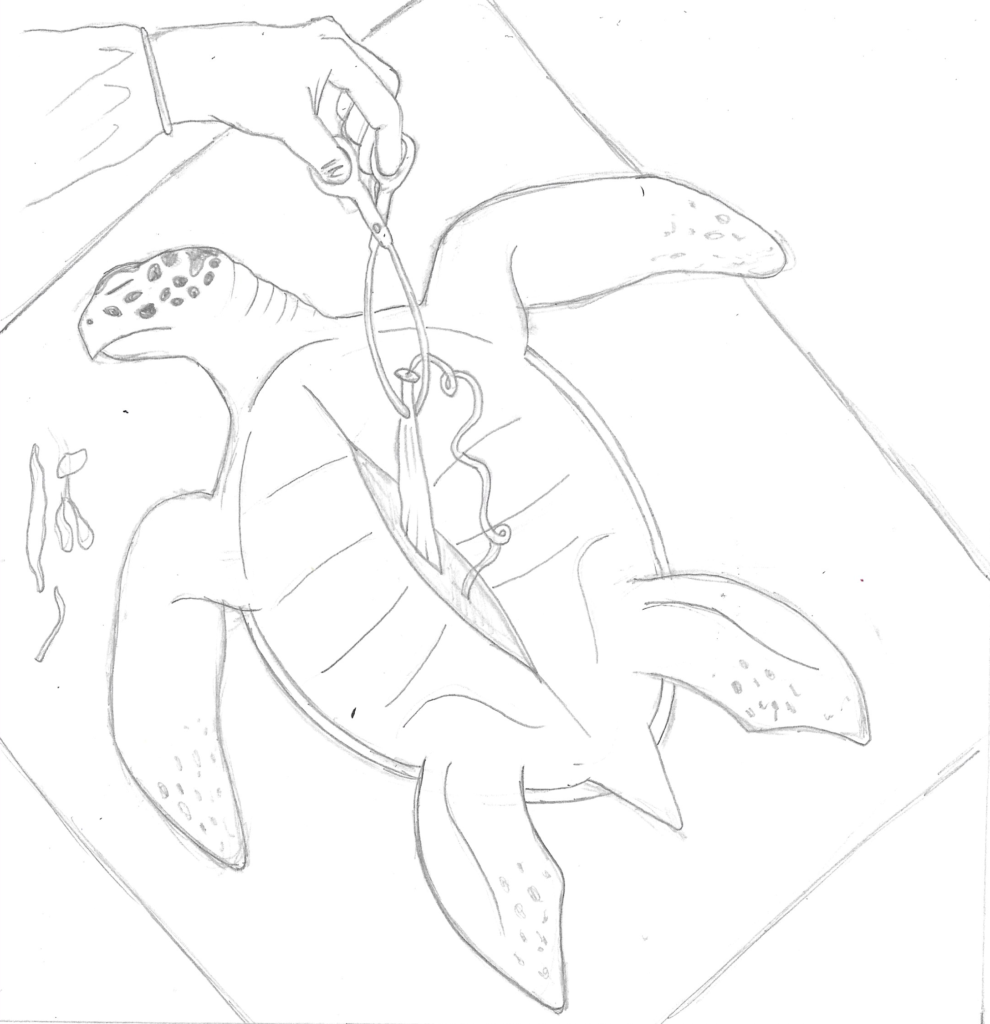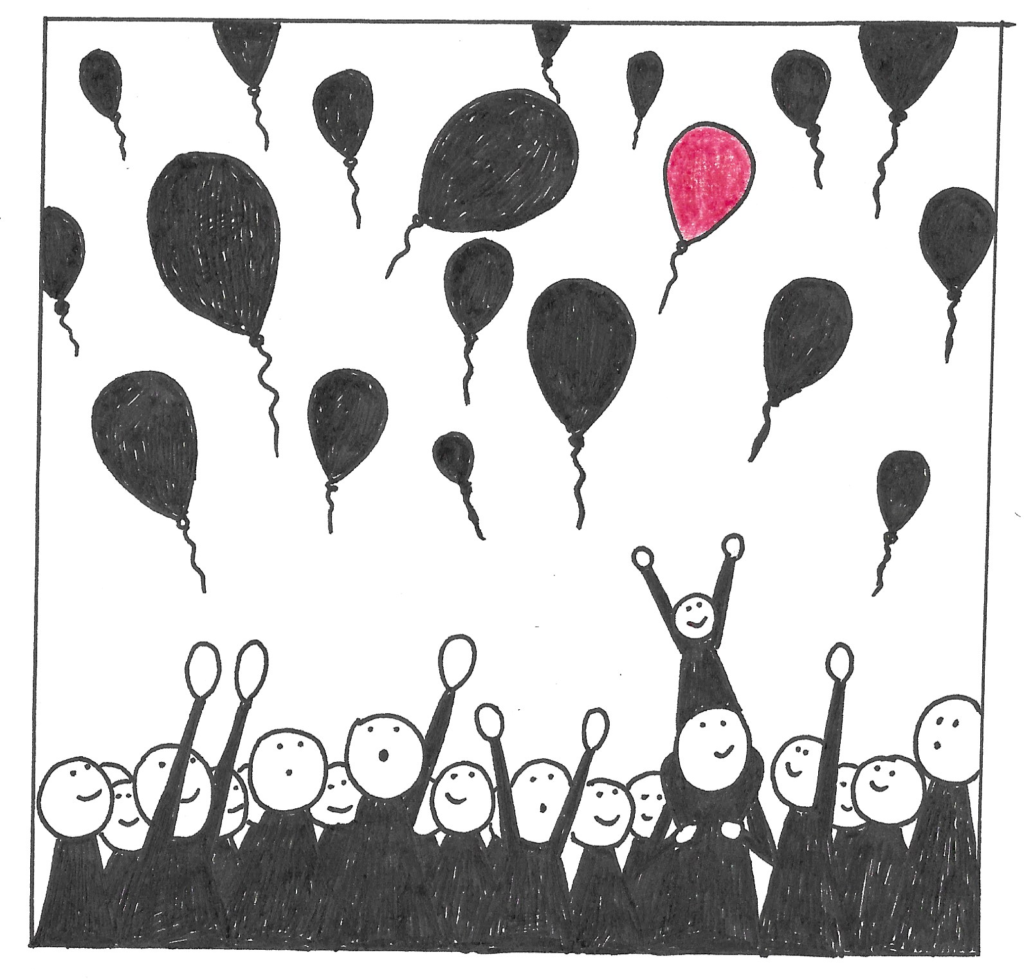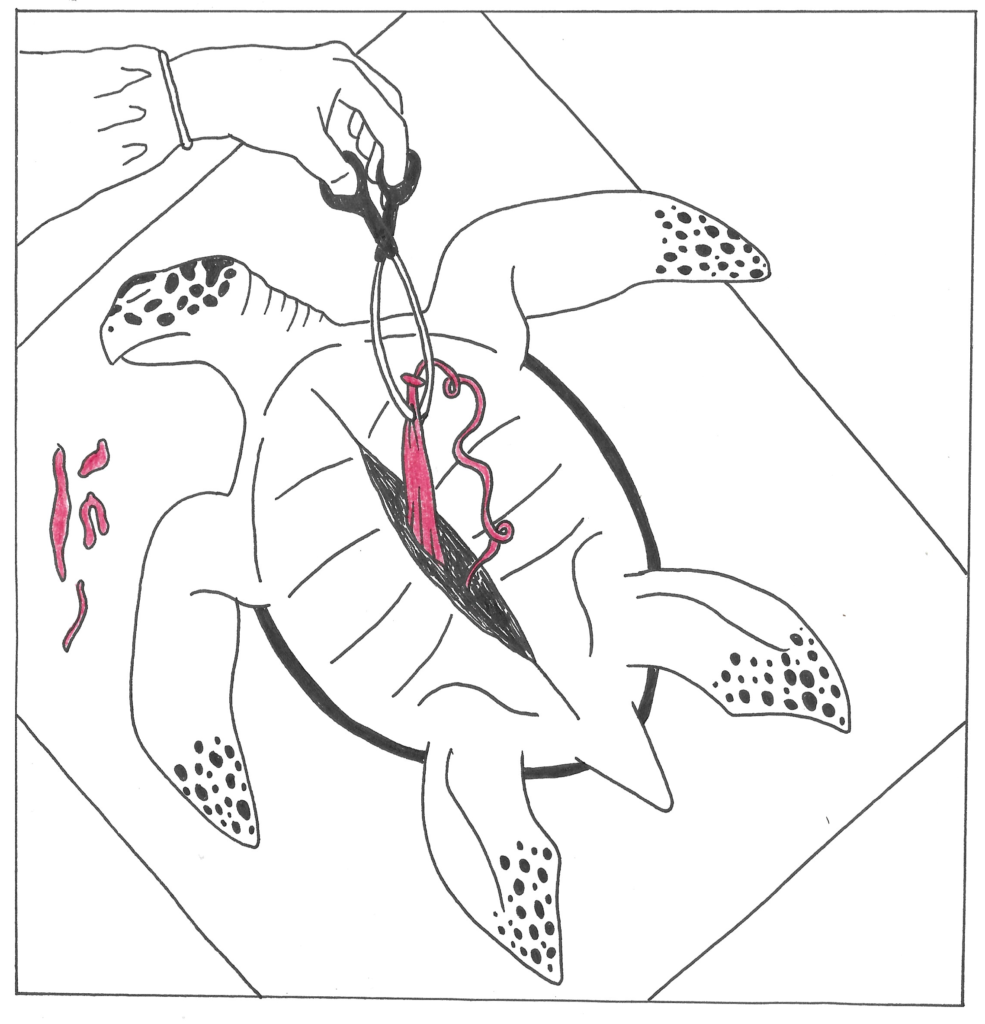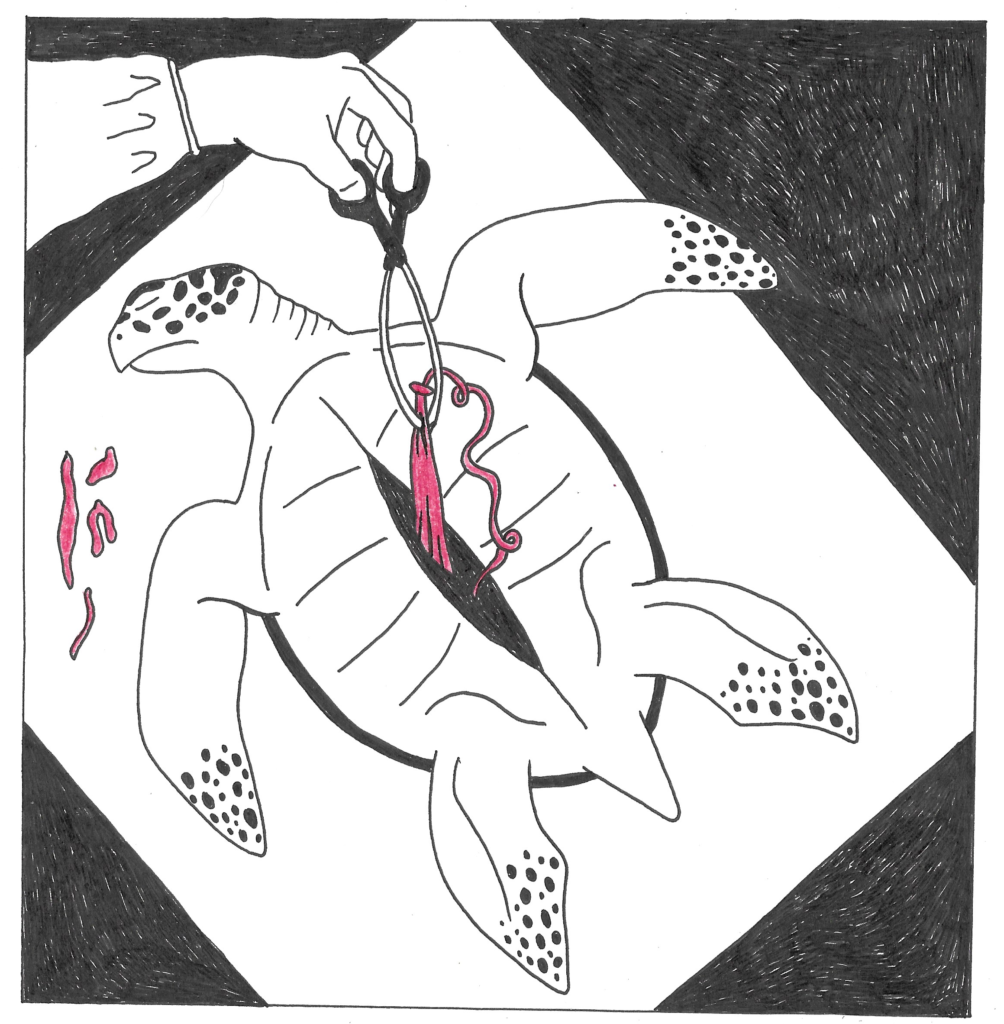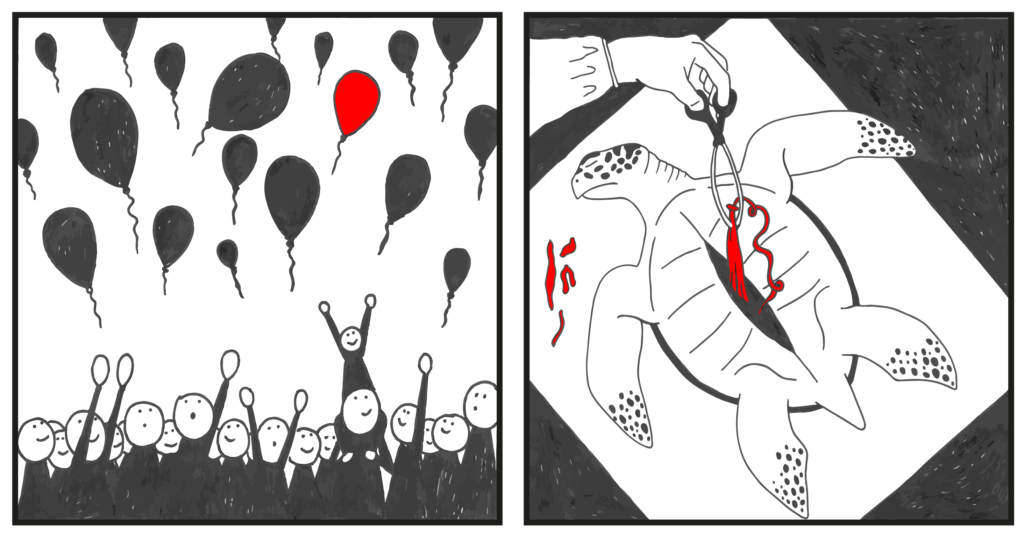Brief
Draw two boxes about 12cm square next to each other on an A4 sheet of paper or card. These boxes will be the two pictures (or ‘panels’) of a very short comic strip.
Now think about an event. This could be anything from painting a door, or going to the shops, to holding a political rally. The important thing is that the two pictures show the beginning and end of an event. The first picture can set the scene, whilst the second picture should show the aftermath or consequence of the event. What you will not draw is the middle part of the event, where the action occurred.
What you are depicting is known in comedy terms as the ‘set-up’ and ‘punchline’, where the set-up gives the audience or reader all the information they need to understand the punchline.
Your story can be atmospheric, serious, or make a political point, but between them your two pictures need to be a self-contained narrative, showing the beginning and end of an event. The core of the story takes place between the two pictures, and it is this unseen part of the narrative that your are suggesting to the reader.
Ideas
I began this exercise by sketching out some very rough ideas.
Although some of these were quite fun, I wanted to try and create something bit more thought-provoking and challenging. I found it quite difficult to come up with any worthwhile ideas, but then I read a newspaper article about a the impact of someone leaving a plastic bag in Bushy Park, which resulted in a deer being shot. This made me think of having a drawing in the first panel of someone carelessly discarding a plastic bag and the second panel having a drawing of the deer with the bag entangled in his antlers, with a gun’s crosshairs aimed at him. I then thought that although I was aware of the story, it might not be clear to someone else and so the link between the two panels would not be obvious.
However, I was interested in creating something of a similar nature and after some further thought, I decided to explore the environmental impact of people releasing helium balloons for various events (I always feel my blood pressure rise when I see this taking place). I decided to focus on the devastating harm that the debris of the balloons cause to wildlife.
Draft Versions
I sketched out a rough composition for the first panel of people releasing balloons en masse. By having one of the balloons coloured red, I could confirm the link between the two panels.
I wanted to keep it quite simple and so, although I initially added more detail to individualise the people, I changed this to making them all look similar as I felt it was their actions that was the most important part of the image.
For the second, consequence panel, I chose to depict a sea turtle having an autopsy, which reveals the cause of death to be ingesting one of the released balloons. I made the drawing in this panel more realistic as I felt it reflected the seriousness of the subject.
Ink Versions
Using a light-box, I made ink versions of the two panels.
I thought the second panel would look better if it had more contrast of black and white in it, so I added the former around the edges, which seemed to have greater visual impact.
Final Versions of Panels
I scanned the drawings into Illustrator and recoloured the red to make it stand out more. I also removed the two lines on the turtle’s back fins as I was not keen on them. I added a black border to both panels and arranged them side by side.
Final Thoughts
I initially thought it would be relatively easy to come up with an idea for this exercise, but the more I tried the more frustrated I became! However, once I fleshed out the balloon concept I felt more confident.
The three examples given in the Research Task were all in the same location in the drawings, whereas my action and reaction take place in different locations, so I felt unsure if this would be appropriate. However, by linking the two with the use of colour red, I thought it was clear of the relationship between the two.
On reflection, the ‘balloon releasing’ picture should have been more neatly drawn (e.g. the balloons should be more regular in shape and not so bumpy) and I could have experimented with the background in the turtle drawing, perhaps changing the white underneath the turtle to circular to represent a spotlight.
This exercise encouraged me to consider the relationship between panels and communicating to the viewer what event has taken place ‘out of sight’.
Reflection after Tutor Feedback
Following feedback from my tutor I considered how the sequence could be expanded. Prior to the two panels created, the reason for the balloon release would be an obvious option – is it in remembrance of an event or a celebration? In between the two panels the journey of the red ballon could be depicted – it would be possible to extend this over several panels, e.g. flying a long distance, deflating/popping, ending up in the sea, the turtle ingesting the balloon and the dead turtle being found. There could then be a panel/set of panels showing the ultimate fate of the turtle – being disposed of – and a final panel with the red, mangled balloon.
I also reflected on my decision to use red for the balloon. In Western cultures, the colour red is associated with danger and warning so is very apt. Red is a strong, powerful colour which demands attention, particularly on a background of black and white. It is also the colour of blood, which again is very relevant.
References
Brines, S. and O, Brien, L. (2020). Balloon Releases Have Deadly Consequences – We’re Helping Citizen Scientists Map Them. [online] EcoWatch. Available at: https://www.ecowatch.com/balloons-pollution-map-2645531901.html [Accessed 12 June 2021].
Higgins, S. (2021). Deer put down after antlers become tangled with plastic bag in Bushy Park. [online] Teddington Nub News. Available at: https://teddington.nub.news/n/deer-put-down-after-antlers-become-tangled-with-plastic-bag-in-bushy-park [Accessed 12 June 2021].
Institute for Marine & Artic Studies, (n.d.). Balloons the #1 marine debris risk of mortality for seabirds. [online] Institute for Marine & Artic Studies. Available at: https://www.imas.utas.edu.au/news/news-items/balloons-the-1-marine-debris-risk-of-mortality-for-seabirds [Accessed 12 June 2021].
